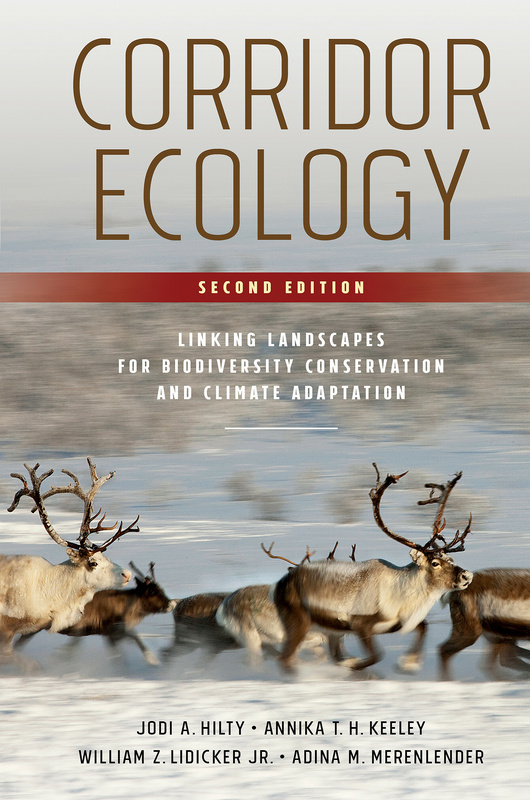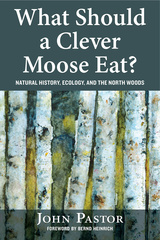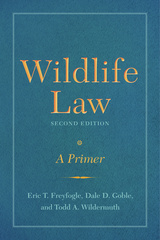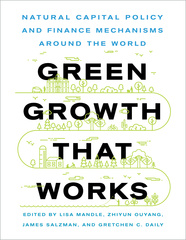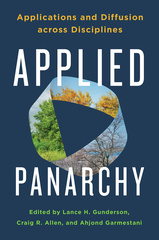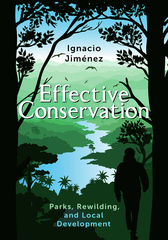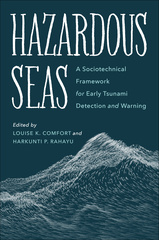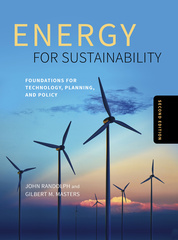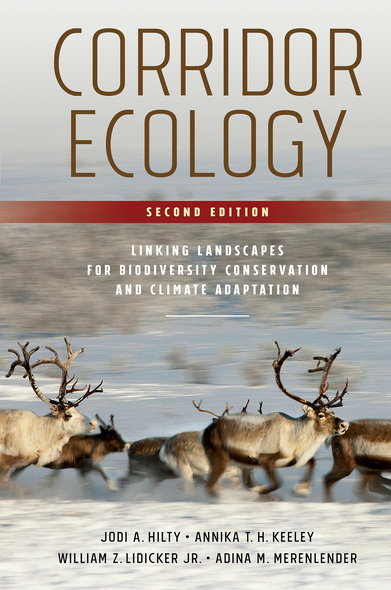
368 pages, 6 x 9
25 photos, 25 illustrations
Paperback
Release Date:23 Apr 2019
ISBN:9781610919517
Corridor Ecology, Second Edition
Linking Landscapes for Biodiversity Conservation and Climate Adaptation
Island Press
Migrating wildlife species across the globe face a dire predicament as their traditional migratory routes are cut off by human encroachment. Forced into smaller and smaller patches of habitat, they must compete more aggressively for dwindling food resources and territory. This is more than just an unfortunate side effect of human progress. As key species populations dwindle, ecosystems are losing resilience and face collapse, and along with them, the ecosystem services we depend on. Healthy ecosystems need healthy wildlife populations. One possible answer? Wildlife corridors that connect fragmented landscapes.
This new and expanded second edition of Corridor Ecology: Linking Landscapes for Biodiversity Conservation and Climate Adaptation captures the many advances in the field over the past ten years. It builds on concepts presented in the first edition on the importance and practical details of maintaining and restoring land connectivity. New to this edition is a guest-edited chapter on ecological connectivity in oceans, including a detailed discussion on pelagic marine corridors and how coastal corridors can provide critical connectivity between marine protected areas. Another new chapter considers the effects of climate change on habitat and offers recommendations on designing effective corridors as landscapes change with shifting climate conditions. The book also includes a discussion of corridors in the air for migrating flying species, from birds to bats, butterflies, and even plant propagules—a concept so new that a term to describe it has yet to be coined. All chapters are thoroughly revised and updated.
Practitioners as well as serious scholars of landscape ecology and the science of protecting biodiversity will find this new edition of corridor ecology science an indispensable resource.
This new and expanded second edition of Corridor Ecology: Linking Landscapes for Biodiversity Conservation and Climate Adaptation captures the many advances in the field over the past ten years. It builds on concepts presented in the first edition on the importance and practical details of maintaining and restoring land connectivity. New to this edition is a guest-edited chapter on ecological connectivity in oceans, including a detailed discussion on pelagic marine corridors and how coastal corridors can provide critical connectivity between marine protected areas. Another new chapter considers the effects of climate change on habitat and offers recommendations on designing effective corridors as landscapes change with shifting climate conditions. The book also includes a discussion of corridors in the air for migrating flying species, from birds to bats, butterflies, and even plant propagules—a concept so new that a term to describe it has yet to be coined. All chapters are thoroughly revised and updated.
Practitioners as well as serious scholars of landscape ecology and the science of protecting biodiversity will find this new edition of corridor ecology science an indispensable resource.
This is a definitive guide and resource for scientists and policymakers, and should be essential reading for local and regional planners.
A clear and concise description of habitat loss, fragmentation, and climate change, which leads one to the conclusion that animals and plants need habitat connectivity in order to persist.
Jodi A. Hilty is president and chief scientist of the Yellowstone to Yukon Conservation Initiative, in Canmore, Alberta. Annika T. H. Keeley is a postdoctoral scholar at the University of California, Berkeley. Dr. William Z. Lidicker is Professor of Integrative Biology and Curator of Mammals Emeritus at the University of California, Berkeley. Adina M. Merenlender is a cooperative extension specialist at the University of California, Berkeley, and president-elect of the Society for Conservation Biology.
Foreword
Preface
Introduction
Chapter 1. Background: Habit Loss, Fragmentation, and Climate Change
-Human-induced Change and Habitat Loss
-Climate Change Overview
-Limitations to Protected Areas
-Reconnecting Our Planet
-Growth of Connectivity Science and Practice
Chapter 2. The Ecological Framework
-Island Biogeography
-Metapopulation Theory: Conceptual History
-Metapopulation Processes
-Dispersal
-The Demography of Extinction
-Genetic Structuring
-A Longer-Term Perspective
-Metacommunity Theory
-Beyond Metacommunities: Landscape and Ecoscape Concepts
Chapter 3. Understanding Fragmentation
-Natural versus Human-Induced Fragmentation
-Speed and Pattern of Change
-Consequences of Human-Induced Fragmentation
-Changes in Species Composition of Patches
-Genetic Considerations Affecting Species Extinction
-Role of the Matrix
-Edges and Edge Effects
Chapter 4. Approaches to Achieving Habitat Connectivity
-What Is a Corridor
-Types of Corridors
-Riparian Areas
-Corridors for Individual Species Conservation
-Corridor Complexities
-Biological Benefits
-Benefits to Humans
Chapter 5. Corridor Design Objectives
-Focal Species Considerations
-Habitat Requirements
-Dispersal Considerations
-Generalist versus Specialist
-Behavioral Factors
-Sensitivity to Human Activity
-Physical Limitations
-Topography and Microclimate for Climate-Wise Connectivity
-Corridor Quality: Continuity, Composition, and Dimension
-Continuous Corridors
-Stepping-Stone Connectivity
-Habitat Quality
-Corridor Dimensions
-Landscape Configuration
-Riparian Corridors
-Hydrologic Habitat Connectivity: Structural, Functional, and Ecological
-Ecological Networks
Chapter 6. Potential Pitfalls or Disadvantages of Linking Landscapes
-Impacts of Edge Effects
-Corridors as Biotic Filters
-Facilitation of Invasions
-Demographic Impacts
-Social Behavior
-Negative Genetic Effects
-Conflicting Ecological Objectives
-Economic Considerations
Chapter 7. Identifying, Prioritizing, and Assessing Habitat Connectivity
-Establish Collaborations
-Addressing Scale
-Identifying Terrestrial Corridors for Conservation and Restoration
-Prioritization
-Climate Resilience Benefits
-Assessing Corridors
-Caveats
Chapter 8. Climate-Wise Connectivity
-Principles of Climate Space
-Designing Climate-Wise Connectivity
-Including Refugia in Climate-Wise Connectivity Design
-Estimating Range Shifts Using Species Distribution Modeling
-Recommendations
Chapter 9. Ecological Connectivity in the Ocean \ Mark H. Carr and Elliott L. Hazen
-Introduction
-What Constitutes Pelagic Connectivity and Corridors?
-Where Are the Major Pelagic Marine Corridors?
-Threats to Pelagic Corridors and Potential Conservation Approaches
-What Constitutes Connectivity and Corridors in the Coastal Ocean?
-Threats to Coastal Species, Ecosystems, and Their Connectivity
-Implications of Coastal Corridors for Species and Biodiversity Conservation: Marine Protected Area Networks
Chapter 10. Protecting and Restoring Corridors
-Opportunities and Challenges
-Law and Policy Mechanisms
-Stewardship of Working Lands
-Private Land Conservation
-Types of Agreements
-Restoring Land
-Lessons from Corridor Projects
Conclusion
References
About the Authors
Index
Preface
Introduction
Chapter 1. Background: Habit Loss, Fragmentation, and Climate Change
-Human-induced Change and Habitat Loss
-Climate Change Overview
-Limitations to Protected Areas
-Reconnecting Our Planet
-Growth of Connectivity Science and Practice
Chapter 2. The Ecological Framework
-Island Biogeography
-Metapopulation Theory: Conceptual History
-Metapopulation Processes
-Dispersal
-The Demography of Extinction
-Genetic Structuring
-A Longer-Term Perspective
-Metacommunity Theory
-Beyond Metacommunities: Landscape and Ecoscape Concepts
Chapter 3. Understanding Fragmentation
-Natural versus Human-Induced Fragmentation
-Speed and Pattern of Change
-Consequences of Human-Induced Fragmentation
-Changes in Species Composition of Patches
-Genetic Considerations Affecting Species Extinction
-Role of the Matrix
-Edges and Edge Effects
Chapter 4. Approaches to Achieving Habitat Connectivity
-What Is a Corridor
-Types of Corridors
-Riparian Areas
-Corridors for Individual Species Conservation
-Corridor Complexities
-Biological Benefits
-Benefits to Humans
Chapter 5. Corridor Design Objectives
-Focal Species Considerations
-Habitat Requirements
-Dispersal Considerations
-Generalist versus Specialist
-Behavioral Factors
-Sensitivity to Human Activity
-Physical Limitations
-Topography and Microclimate for Climate-Wise Connectivity
-Corridor Quality: Continuity, Composition, and Dimension
-Continuous Corridors
-Stepping-Stone Connectivity
-Habitat Quality
-Corridor Dimensions
-Landscape Configuration
-Riparian Corridors
-Hydrologic Habitat Connectivity: Structural, Functional, and Ecological
-Ecological Networks
Chapter 6. Potential Pitfalls or Disadvantages of Linking Landscapes
-Impacts of Edge Effects
-Corridors as Biotic Filters
-Facilitation of Invasions
-Demographic Impacts
-Social Behavior
-Negative Genetic Effects
-Conflicting Ecological Objectives
-Economic Considerations
Chapter 7. Identifying, Prioritizing, and Assessing Habitat Connectivity
-Establish Collaborations
-Addressing Scale
-Identifying Terrestrial Corridors for Conservation and Restoration
-Prioritization
-Climate Resilience Benefits
-Assessing Corridors
-Caveats
Chapter 8. Climate-Wise Connectivity
-Principles of Climate Space
-Designing Climate-Wise Connectivity
-Including Refugia in Climate-Wise Connectivity Design
-Estimating Range Shifts Using Species Distribution Modeling
-Recommendations
Chapter 9. Ecological Connectivity in the Ocean \ Mark H. Carr and Elliott L. Hazen
-Introduction
-What Constitutes Pelagic Connectivity and Corridors?
-Where Are the Major Pelagic Marine Corridors?
-Threats to Pelagic Corridors and Potential Conservation Approaches
-What Constitutes Connectivity and Corridors in the Coastal Ocean?
-Threats to Coastal Species, Ecosystems, and Their Connectivity
-Implications of Coastal Corridors for Species and Biodiversity Conservation: Marine Protected Area Networks
Chapter 10. Protecting and Restoring Corridors
-Opportunities and Challenges
-Law and Policy Mechanisms
-Stewardship of Working Lands
-Private Land Conservation
-Types of Agreements
-Restoring Land
-Lessons from Corridor Projects
Conclusion
References
About the Authors
Index

